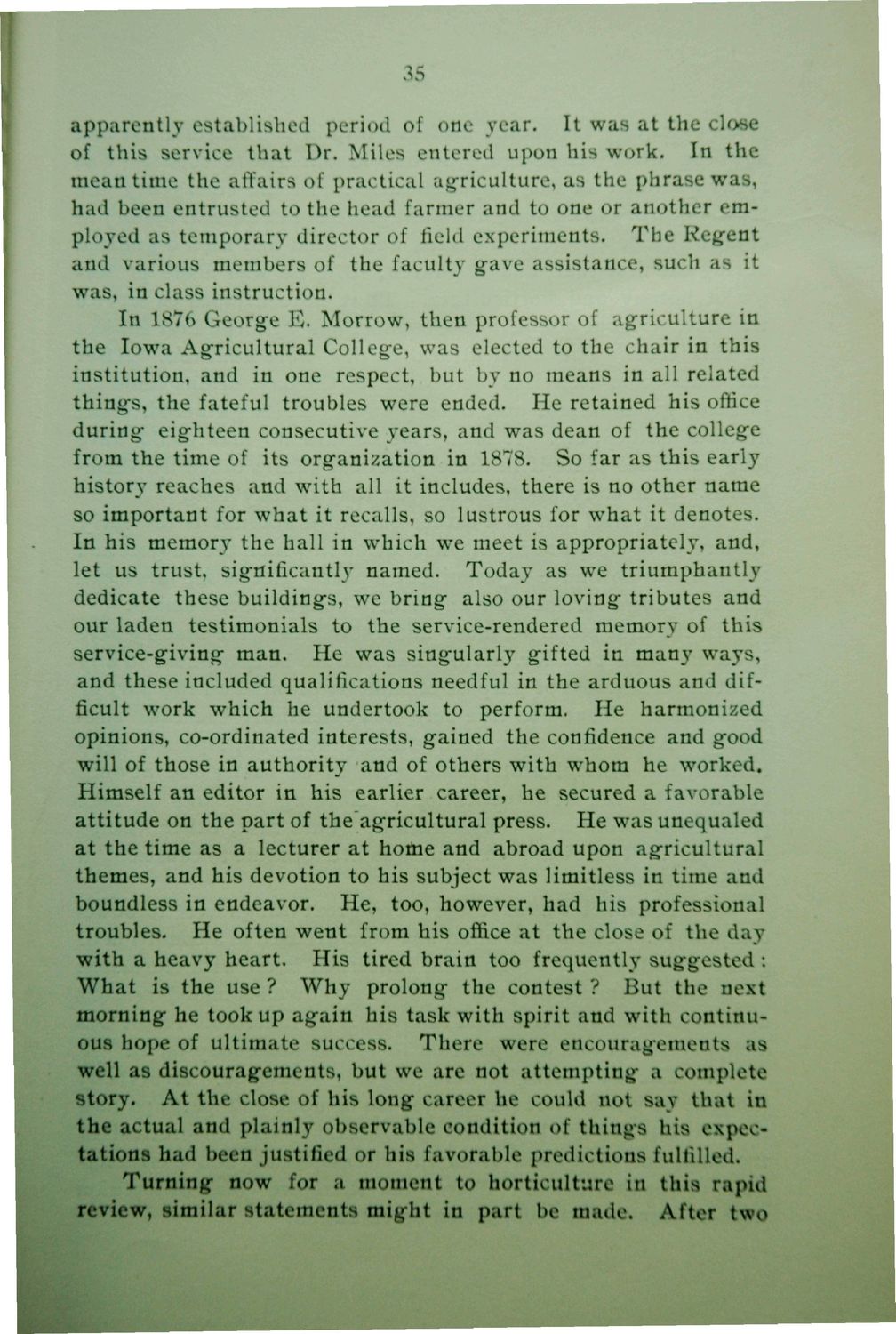| |
| |
Caption: Dedication - Ag Building
This is a reduced-resolution page image for fast online browsing.

EXTRACTED TEXT FROM PAGE:
35 apparently established period of one year. It was at the close of this service that Dr. Miles entered upon his work. In the mean time the affairs of practical agriculture, as the phrase was, had been entrusted to the head farmer and to one or another employed as temporary director of field experiments. The Regent and various members of the faculty gave assistance, such as it was, in class instruction. In 1876 George E. Morrow, then professor of agriculture in the Iowa Agricultural College, was elected to the chair in this institution, and in one respect, but by no means in all related things, the fateful troubles were ended. He retained his office during eighteen consecutive years, and was dean of the college from the time of its organization in 1878. So far as this early history reaches and with all it includes, there is no other name so important for what it recalls, so lustrous for what it denotes. In his memory the hall in which we meet is appropriately, and, let us trust, significantly named. Today as we triumphantly dedicate these buildings, we bring also our loving tributes and our laden testimonials to the service-rendered memory of this service-giving man. He was singularly gifted in many ways, and these included qualifications needful in the arduous and difficult work which he undertook to perform. He harmonized opinions, co-ordinated interests, gained the confidence and good will of those in authority and of others with whom he worked. Himself an editor in his earlier career, he secured a favorable attitude on the part of the agricultural press. He wasunequaled at the time as a lecturer at hoine and abroad upon agricultural themes, and his devotion to his subject was limitless in time and boundless in endeavor. He, too, however, had his professional troubles. He often went from his office at the close of the day with a heavy heart. His tired brain too frequently suggested : What is the use ? Why prolong the contest ? But the next morning he took up again his task with spirit and with continuous hope of ultimate success. There were encouragements as well as discouragements, but we are not attempting a complete story. At the close of his long career he could not say that in the actual and plainly observable condition of things his expectations had been justified or his favorable predictions fulfilled. Turning now for a moment to horticulture in this rapid review, similar statements might in part be made. After two
| |